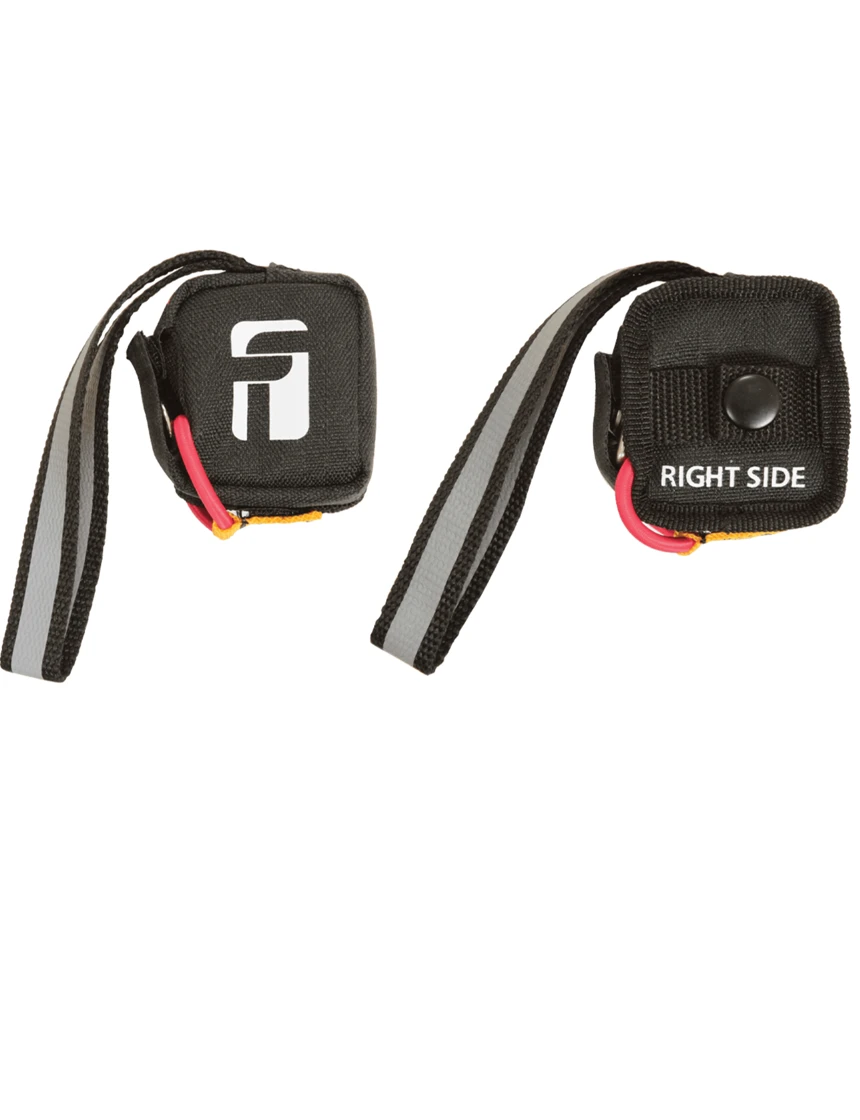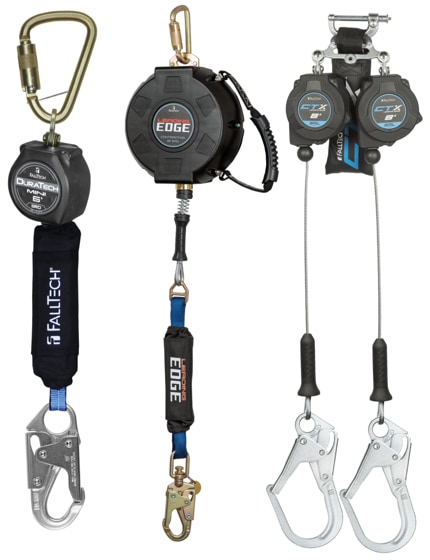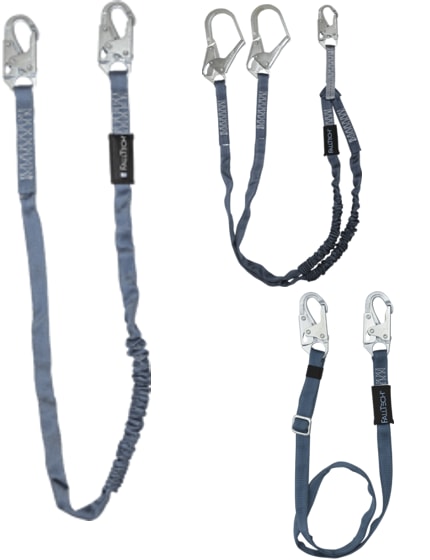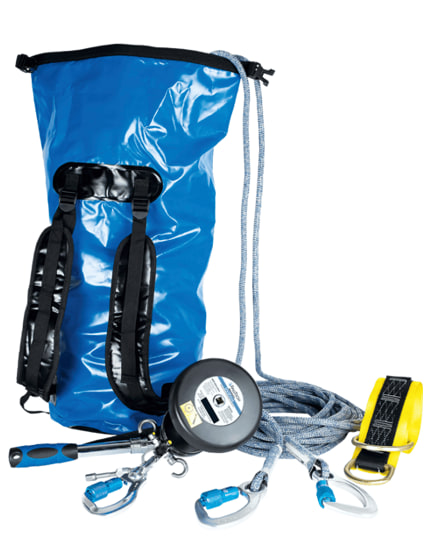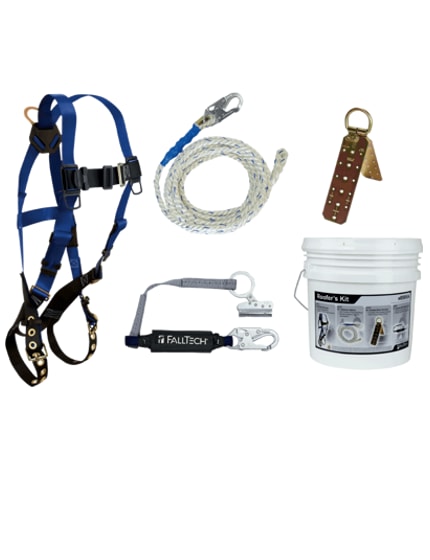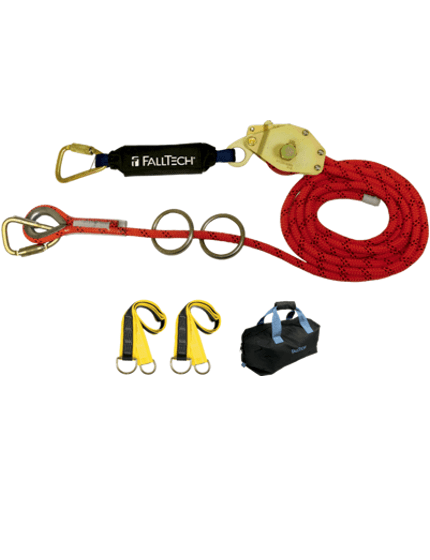-14119-134008676162013463-860x1120.webp)
Harnesses
![FallTech Contractor 1D Standard Non-belted Full Body Harness]() View Prices
View PricesFallTech Contractor 1D Standard Non-belted Full Body Harness
Non-Belted
One D-Ring
Four Sizes![FallTech Contractor 1D Standard Non-belted Full Body Harness, Tongue Buckle Leg Adjustment]() View Prices
View PricesFallTech Contractor 1D Standard Non-belted Full Body Harness, Tongue Buckle Leg Adjustment
Non-Belted, One D-Ring
"Tongue-Buckle' Leg Closures
Four Sizes![FallTech Contractor+ 1D Standard Non-belted Full Body Harness]() View Prices
View PricesFallTech Contractor+ 1D Standard Non-belted Full Body Harness
Non-Belted, One D-Ring
"Tongue-Buckle' Leg Closures
Padded Shoulder Yoke, Four Sizes![FallTech Contractor 3D Construction Belted Full Body Harness]() View Prices
View PricesFallTech Contractor 3D Construction Belted Full Body Harness
Belted, Three D-Rings
"Tongue-Buckle' Leg Closures
Four Sizes![FallTech Contractor+ 3D Construction Belted Full Body Harness]() View Prices
View PricesFallTech Contractor+ 3D Construction Belted Full Body Harness
Belted, Three D-Rings
"Tongue-Buckle' Leg Closures
Padded Shoulder Yoke, Four Sizes![FallTech Tradesman® Pro 1D Standard Non-belted Full Body Harness, Tongue Buckle Leg Adjustments]() View Prices
View PricesFallTech Tradesman® Pro 1D Standard Non-belted Full Body Harness, Tongue Buckle Leg Adjustments
Non-Belted, One D-Ring
"Tongue-Buckle' Leg Closures
Padded Shoulder Yoke, Three Sizes![FallTech FT-Iron® 3D Construction Belted Full Body Harness, Tongue Buckle Leg Adjustments]() View Prices
View PricesFallTech FT-Iron® 3D Construction Belted Full Body Harness, Tongue Buckle Leg Adjustments
Belted, Three D-Rings
"Tongue-Buckle' Leg Closures
Two Sizes![FallTech FT-Iron® 1D Standard Non-Belted Full Body Harness Tongue Buckle Leg Adjustment]() View Prices
View PricesFallTech FT-Iron® 1D Standard Non-Belted Full Body Harness Tongue Buckle Leg Adjustment
Non-Belted, One D-Ring
"Tongue-Buckle' Leg Closures
Padded Shoulder Yoke, Four Sizes![FallTech FT-Iron® 1D Standard Non-Belted Full Body Harness, Quick Connect Buckle Leg Adjustments]() View Prices
View PricesFallTech FT-Iron® 1D Standard Non-Belted Full Body Harness, Quick Connect Buckle Leg Adjustments
Non-Belted, One D-Ring
Comfort Legs® lateral leg straps
Padded Shoulder Yoke, Four Sizes![FallTech Suspension Trauma Relief System]() View Prices
View PricesFallTech Suspension Trauma Relief System
Attach to any FallTech Harness
Creates a "strap" for the wearer to stand on following a fall while awaiting rescue
On Sale Products
Fall Protection Harness Sizing Guide: How to Choose the Right Fit
When working at heights, fall protection harnesses serve as the cornerstone of worker safety. However, merely donning a harness isn't sufficient—it must fit precisely. An ill-fitting safety harness can lead to failed OSHA inspections, heightened injury risks during falls, and potential employer liability.
This comprehensive guide covers all essentials on safety harness sizing, accurate measurement techniques, and the latest requirements from OSHA and ANSI/ASSP as of 2025.
Why Safety Harness Sizing Matters
Unlike regular apparel, fall arrest harnesses are precision-engineered to evenly distribute impact forces across the body during a fall. A loose harness risks the worker slipping out, while an overly tight one can cause circulation issues or suspension trauma. Optimal fit guarantees:
- Adherence to OSHA harness requirements
- Effective load distribution during falls
- Enhanced worker comfort and mobility
- Minimized risk of secondary injuries
How Safety Harnesses Are Sized
Harness sizing relies on body measurements, height, and weight, rather than standard clothing sizes. Manufacturers supply detailed size charts considering:
- Chest circumference
- Thigh circumference
- Torso length (from shoulder top to hip bone)
- Height for overall proportion
- Total weight (encompassing tools, gear, and clothing)
Brands often employ Small/Medium/Large/XL designations or numerical ranges. Most specify a weight capacity, typically 130 to 310 pounds per ANSI standards, though some models extend to 420 pounds for fully equipped users.
Pro tip: Measure workers in full job attire, including tool belts and seasonal layers, to account for real-world conditions.
How to Measure for a Fall Protection Harness
For an accurate fit, employ a flexible tape measure and note these key areas:
| Area | How to Measure |
|---|---|
| Chest | Around the broadest chest area with arms at rest |
| Thighs | Around the upper thigh, just below the groin |
| Torso | From shoulder top down to hip bone |
| Height | Overall standing height without shoes |
| Weight | Fully equipped in workwear and daily tools |
If measurements straddle sizes, opt for the larger one—tightening is simpler than stretching. Consider harnesses with advanced adjustments for diverse body types, including better fits for women.
OSHA and ANSI/ASSP Harness Requirements
As of 2025, key standards include:
- OSHA 29 CFR 1926.502: Mandates proper wearing of fall arrest systems, emphasizing a snug, secure fit without excess webbing to ensure effective performance. Recent updates effective July 1, 2025, lower the fall protection trigger height to 6 feet for residential construction and roofing, requiring compliant equipment like harnesses at lower elevations.
- ANSI/ASSP Z359.11-2021: Sets performance, design, testing, and labeling standards for full-body harnesses, preventing slippage, improper load distribution, or excessive fall distances. Updates include modified dynamic testing, frontal connection stretch-out requirements, integrated energy absorbers, and enhanced labeling with pictograms.
Non-compliance may cause:
- Internal injuries from uneven load distribution
- Suspension trauma from restricted blood flow
- Increased fall distances heightening secondary impact risks
Falltech Harness Size Ranges
FallTech® Men’s Harness Sizing Chart
| Size | Chest | Waist | Thigh (TB) | Thigh (MB/QC) |
|---|---|---|---|---|
| X-Small | 32"–49" | 30"–39" | 16"–28" | 14"–30" |
| Small | 38"–51" | 34"–43" | 18"–30" | 16"–32" |
| Medium | 40"–53" | 38"–47" | 20"–32" | 18"–34" |
| Large | 42"–55" | 42"–51" | 22"–34" | 20"–36" |
| X-Large | 46"–57" | 46"–55" | 24"–36" | 22"–38" |
| 2X-Large | 48"–60" | 50"–59" | 26"–38" | 24"–40" |
| 3X-Large | 51"–62" | 54"–63" | 28"–40" | 26"–42" |
| 4X-Large | 50"–64" | 58"–67" | 30"–42" | 28"–44" |
| Size | Chest | Waist | Thigh (TB) | Thigh (MB/QC) |
|---|---|---|---|---|
| Universal | 47"–60" | — | 19"–31" | 17"–33" |
| Size | Chest | Waist | Thigh (TB) | Thigh (MB/QC) |
|---|---|---|---|---|
| S/M | 43"–53" | 34"–47" | 18"–30" | 16"–32" |
| L/XL | 45"–58" | 42"–55" | 22"–34" | 20"–36" |
| XL/2X | 49"–68" | 46"–59" | 24"–36" | 22"–38" |
| 2X/3X | 51"–63" | 50"–66" | 26"–38" | 24"–40" |
| 3X/4X | 52"–64" | 54"–70" | 28"–40" | 26"–42" |
TB = Tongue Buckle • MB = Mating Buckle • QC = Quick-Connect Buckle
Fit tips: measure the widest part of the chest, the natural waist above the hips, and the thickest part of the upper thigh.
"Universal" harnesses often span Medium to XL but may not suit all body types ideally. Consult manufacturer charts for precision.
Safety Harness Fit Checklist
Prior to work, verify:
- The dorsal D-ring positions between shoulder blades
- The chest strap lies flat at mid-chest level
- Leg straps are snug (2-3 fingers' space) without restricting circulation
- Webbing is flat, untwisted, and unbunched
- All straps are adjusted tight with no dangling slack
- Sub-pelvic strap sits under buttocks for support
Inability to achieve this indicates incorrect sizing. Use a mirror or buddy for verification.
Harness Inspection Guidelines
Inspect before and after each use:
- Check impact indicators for deployment (replace if activated)
- Ensure labels are legible
- Examine hardware for damage, rust, or malfunction
- Inspect webbing for wear, fraying (>10% requires removal), tears, burns, or loose stitches—bend into U-shape for hidden issues
- Follow manufacturer and Competent Person protocols
No official expiration; replace per condition or manufacturer advice.
Stocking the Right Harness Sizes for Your Crew
To ensure compliance and safety, employers should:
- Maintain at least M, L, XL in stock
- Include XL+ and 2XL+ for seasonal bulk or larger workers
- Offer specialized harnesses (e.g., arc-flash, welding with Kevlar) for niche roles
- Conduct fit-tests for new hires, document training, and include suspension trauma relief features
Final Word: Fit Equals Fall Protection
An ill-fitting fall protection harness poses a hazard rather than protection. Mitigate risks and safeguard teams by:
- Accurate worker measurements
- Stocking diverse sizes and innovative designs
- Training on adjustment, inspection, and usage
- Daily pre-shift fit and inspection checks
Proper sizing fosters safety, comfort, and compliance— in fall protection, fit is paramount to safety.


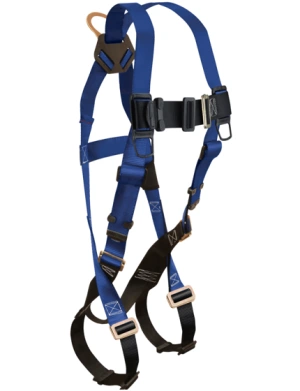
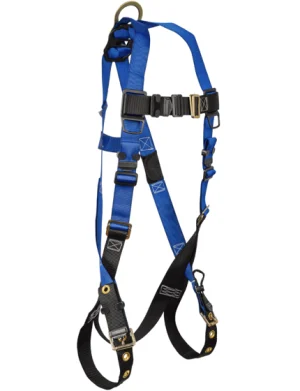
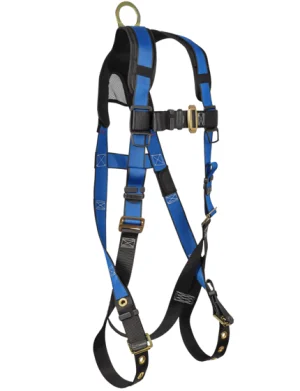

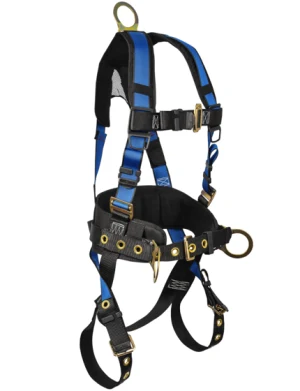
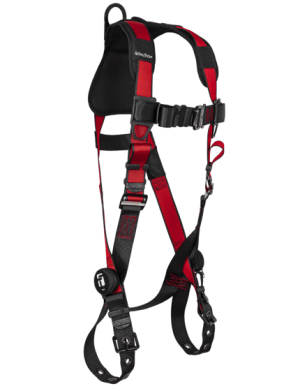
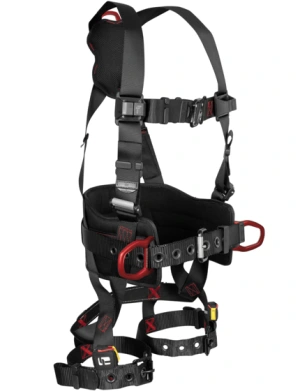
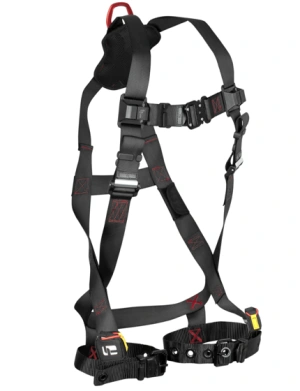
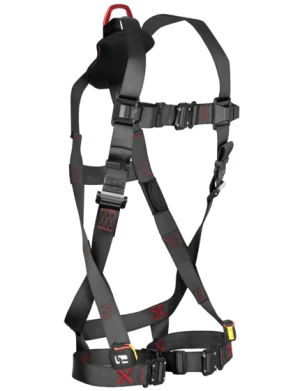
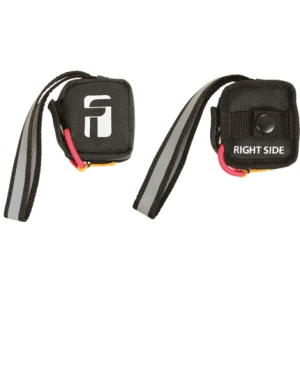
-14124-134008692333537774-860x1120.webp)
-14129-134008731017396375-860x1120.webp)
-14133-134008740662066896-860x1120.webp)
-14138-134008753413835796-860x1120.webp)
-14142-134008763272700546-860x1120.webp)
-14146-134008813682549090-860x1120.webp)
-14150-134008829816494170-860x1120.webp)
-14154-134008841100838388-860x1120.webp)
